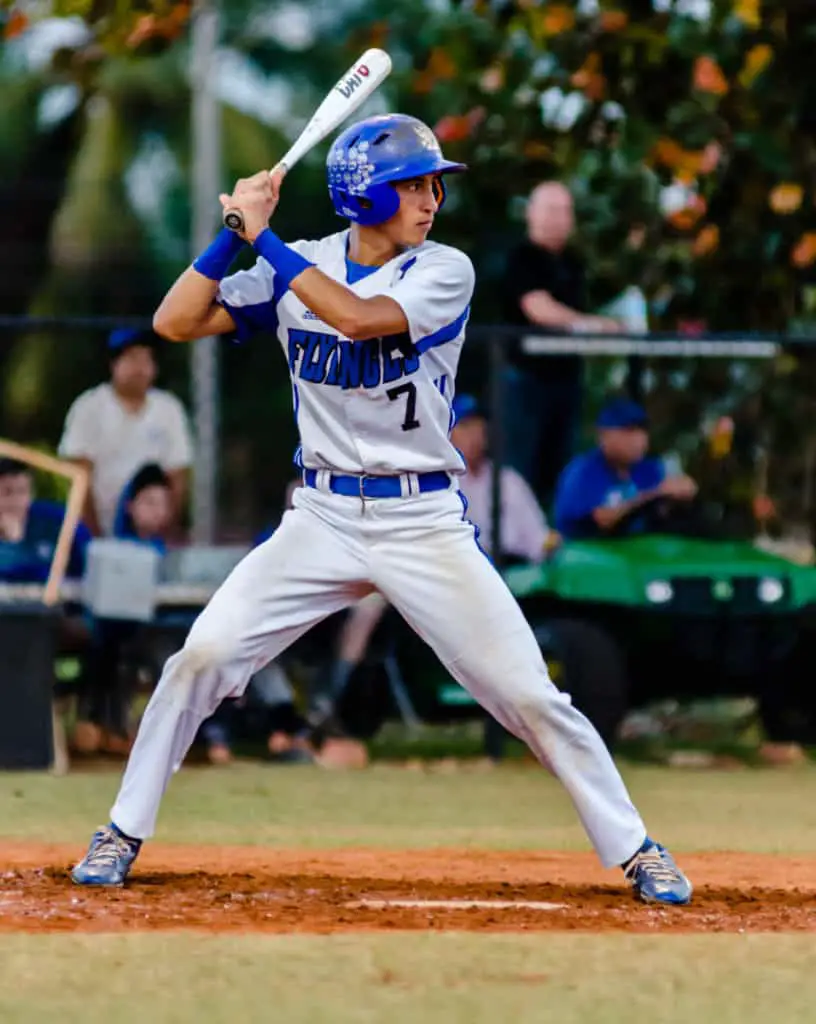Baseball is a great game loved by many.
Most kids in America play the game growing up and are involved on a Little League Team.
They will often start with T-Ball, play coach or machine pitch baseball and then transition to kid pitch baseball.
Here at sportswarrior365, we have played and coached many games of baseball over the past 35 years. It is a great game to play and watch and one of the amazing parts of summer in many parts of the country!
There are some unique parts of baseball and one of those unique parts is how many ways there are to reach 1st base.
How Many Ways To Reach 1st Base?
There are 9 total ways to reach 1st base in baseball! They include the following:
- Single
- Walk
- Fielder’s Choice
- Hit By Pitch
- Fielding Error
- Dropped 3rd Strike
- Catcher’s Interference
- Fielder Interference
- Batted Ball that directly hits a runner
More detail about each of the 9 ways to reach 1st base can be found below.

#1 Single
This is typically a ground ball or line driver that gets through the infield or when a fielder is not able to get to the ball quick enough to get the batter out at first base. This might be the most common way that baseball players reach 1st base.
#2 Walk
A walk is the 2nd most popular way to reach 1st base. This takes place when there are 4 balls thrown prior to the batter putting the ball in play or before 3 strikes are thrown. This play happens very frequently at the lowest levels of baseball due to pitchers struggling to throw strikes.
#3 Fielder’s Choice
An example of a fielder’s choice most frequently occurs when there is a runner on 1st base at the time of the pitch and the infielder throws the ball to 2nd base for the first out, but does not then get the ball to 1st base to turn the double play.
#4 Hit By Pitch
This one hurts the most. When a batter is hit directly with a pitcher he or she is awarded first base. Many times in little leagues if a pitcher hits 2 batters in one inning or 3 in a game they have to be removed for at least one inning of pitching.
#5 Fielding Error
This takes place when a batted ball is hit to a fielder and the routine play would have involved the player fielding it clean and making it a clean throw (if necessary). If the fielder fails to do this it can be ruled an error by the score keeper.
#6 Dropped 3rd Strike
This most frequently occurs when a batter swings at a pitch in dirt or over his or her head and the catcher is not able to field the ball cleanly. When 1st base is unoccupied at the time of the pitch or there are 2 outs, the runner is able to run to first on the dropped 3rd strike. The fielding team must either tag the runner or make a throw to 1st base and beat the batter to the base. If they fail to do this, the batter has reached base safely and the strike out does not count as an out.
#7 Catcher’s Interference
When a batter attempts to swing at pitch and hits any part of the catcher before hitting the ball, catcher’s interference is called. The batter is awarded first base.
How to be a catcher in baseball
#8 Fielder Interference
An example of fielder interference is if the fielder gets in the way or obstructs the batter on his or her way to first base causing an out to occur. In this situation, the batter is awarded first base.
#9 Batted Ball that directly hits a runner
This is an interesting one. If there are runners on base and a batted ball hits a runner prior to a fielder touching the ball and the fielder having a chance to field a ball, the runner is out, but the batter is awarded first base!
Who would have ever thought there were 9 ways to reach 1st base? Next time you are hanging out with some baseball people, ask this question and see just how good they really are with their knowledge of baseball!
Related Post
How to get out of a hitting slump
